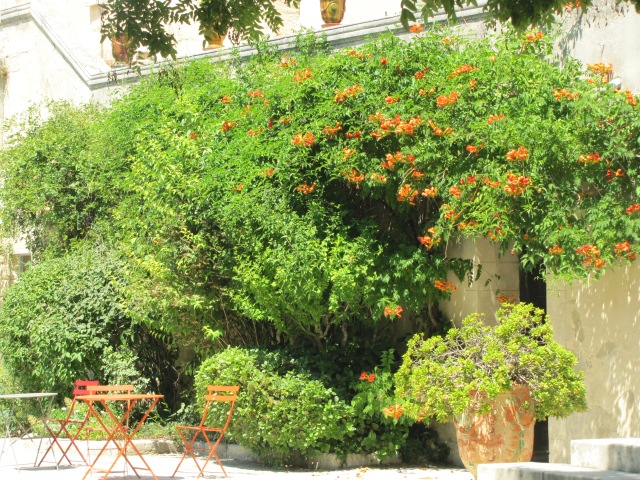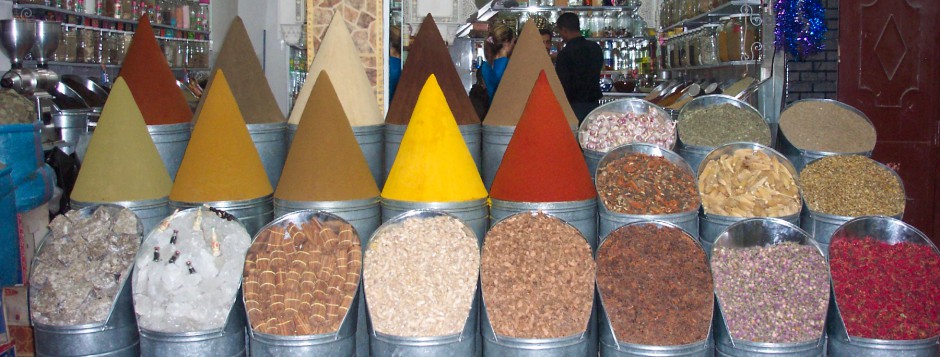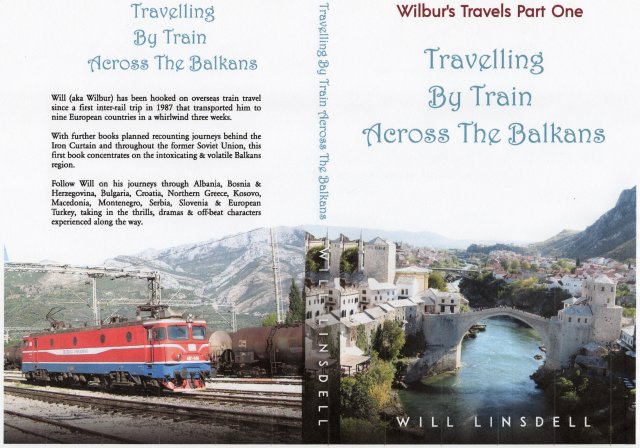Continuing my alternative tour ideas in France utilising engine power, I am now turning my attention to Romanesque France……
Gaulish
The two main cities that you can use as a convenient base to explore the Roman sites are Avignon & Nîmes, so let’s start there.
Avignon
The walled compact city of Avignon and it’s smaller, younger brother Villeneuve-lès-Avignon sit astride the Rhône River 88 km north of Aix-en-Provence. Avignon is dominated by the immense Palace of the Popes, which can be seen for miles around.

View of Palace of the Popes, Avignon
The impressive structure was built in the 14th Century, when a succession of Pontiffs were Gallic (Benedict XII in 1334, Clement VI in 1342, Innocent VI in 1352, Urban V in 1362, Gregory XI in 1370 and Antipope Benedict XIII in 1394).
Enough of the papal history lesson, the vast palace sits atop a hill, looking down upon the rest of the walled city. I suppose this was symbolic of the great religious leaders looking down upon their subjects, but would also have been for defensive purposes. It has a definite castle look to it in places with turrets and arrow slits, a sign of the turbulent crusader period during which it was constructed, when religious wars were frequent.
The structure is huge (15,000 square metres floor space, approximately the size of four Gothic cathedrals), requiring several photographs to capture the aspect of its entire facade. It looms over a pleasant square filled with the touristic eateries and shops that you would expect of such a place.

We actually did not have time to venture inside, but from the pictures I have seen we missed out on an absolute gem, particularly the popes’ private chambers and the frescoes painted by the Italian artist Matteo Giovannetti. Next time………
Apart from the palace, the rest of Avignon is a lovely place with atmospheric squares, cobbled streets, the stone Pont d’Avignon and of course its largely intact walls with several impressive entrance gates. The Hôtel de Ville is also one of the nicest examples that I have seen in France.

You can also now travel to Avignon all the way from London with Eurostar during the summer months as it is a stop off on the Marseille train.
Crossing the Rhône River takes you to Villeneuve-lès-Avignon. You can be forgiven for thinking this is some kind of new town (I made the same incorrect assumption) when in actual fact it’s major buildings date back to the 11th century.
It has its own splendid cathedral with very nice cloisters and the honey coloured buildings, cobbled streets, pretty flowers, cafe strewn square and fabulous Friday market make it a nice relaxing destination away from the more crowded and larger neighbour, so it a great option for finding a hotel as a base for the region.

The picture above is of the Friday market where we bought delicious fresh fruit to eat later on.
The highlights of Villeneuve however are the Fort Saint-Andre and the adjoining Jardins de l’Abbaye Saint-André, reached by sauntering up a meandering path built around the hillside.

The views from the fort and gardens are stunning, across to Avignon and taking in miles of the Rhône snaking along the valley below.
The 14th century fort itself is great – easy to imagine yourself as a crusader knight as you clamber around the ramparts.

Entrance Gate To The Fort And Abbey
It was however the abbey and its gardens that tickled our fancy the most. I will never forget the incredible feeling of well-being as we sat in the beautiful sunny gardens eating fresh peaches and cherries we had purchased at the market. Just wonderful.

A Peach!
The whole gardens were totally alluring, colourful scented flowers, secret pathways, olive groves, lily ponds, gently flowing fountains and ivy covered statues scattered about the place.


View Of The Fort From Our Hotel Window
Whilst on the subject of Avignon, you can also use it as an alternative base for the alluring villages of Provence (see Le Tour Part Two for details) or the famous wine growing region of Côtes du Rhône topped by the daddy of them all when it comes to delicious reds Chateauneuf du Pape, which is a small village dominated by wineries and their shops.

Viticulture Hydraulics near Châteauneuf-Du-Pape

Chateau near Châteauneuf-Du-Pape, France
Nîmes
Situated just 44 km south west of Avignon (30 minutes by train), Nîmes has a distinctly Roman history and many well preserved structures from that time, earning it the nickname of France’s Rome. The most famous of the buildings are the Maison Carrée, a fine example of a Roman temple, and the Arena of Nîmes, another monumental gladiatorial amphitheatre.

Maison Carrée
After the fall of the Roman Empire, the arena housed a fortified palace. Later it became a bullring and today the tourist attraction serves as a live entertainment venue, whilst still housing bull fights during the Feria de Nîmes, a celebration that has been held for over 60 years.

Arena of Nîmes
During your visit to the city you can easily be fooled into feeling like you are in Rome, a feeling helped by the two splendid city gates that still stand.
What did the Romans ever do for us?
The Roman Empire certainly left improvement in their wake wherever they conquered. They built infrastructure where little or none existed before, such as roads and sewage systems. It is their buildings however that they are most famed for, notably the amphitheatre and the aqueduct.
France, or Gaul as the Romans christened the country, has extra special examples of both in the vicinity of the aforementioned cities.
Pont du Gard is a magnificent Roman aqueduct bridge, certainly the finest fully standing one of its type in Europe and a UNESCO World Heritage site. It stands astride the River Gardon, with its three tiers of arches. It was built to carry water from springs at Uzès the 50km to Nîmes – apparently it carried 44 million imperial gallons of water a day to the city.
The impressive structure was built in 1st century AD and stands 49 metres tall making it the highest such structure to have survived to today. The main reason that it is preserved so well is that when it ceased to be used to carry water, it served hundreds of years as a toll bridge over the river. How enterprising!

Pont du Gard
The region has two more superb amphitheatres located in Arles & Orange – those Romans certainly liked to be entertained!
First port of call Arles, which has an authentically historical feel, the whole place displaying notable Roman influence. On our visit, we peered inside the amphitheatre without paying to go in. We got an excellent idea of the structure inside & out and would be following the guide book advice, “if you do one amphitheatre in the region, make it Orange (the place not the colour).”

It isn’t just the star attraction that gives you that Roman feel in Arles, the whole place has you picturing gladiators, slaves and big cats. The statues, the ancient walls, the scattered columns, the narrow streets and the rocky paving all remaining from Roman times, even if no doubt they had been restored on several occasions.

The best amphitheatre of the whole region awaits you in Orange, the city that spawned the House of Orange, the historic Dutch Royal Dynasty that was to be so prominent and divisive in Europe, none more so than in the United Kingdom and Ireland.
You are drawn straight to the imposing amphitheatre, like all paths lead to the iconic venue. Wow, how it justified us skipping the interior of its near neighbour in Arles. Not only are the stepped seats in great condition (albeit restored), but the stage, choir and stage wall are all remarkably intact, complete with monolithic statue set into the centre of the stage wall recess.

It doesn’t take much imagination to picture actors, musicians and singers strutting their stuff for the benefit of the expectant spectators. In fact the site is still used for plays, concerts and operas, with the likes of Maria Callas, Montserrat Caballé and Bjorn Again (?), having played there in relatively modern times.

So there you have it, a Roman holiday outside of Italy. I travelled there with Mrs Wilbur in early June 2014 and the weather was perfect and the sites pretty much crowd free (I cannot imagine getting the above picture in July or August). Veni, vidi, vici!







You have reminded me that this is a place that I need to visit!
LikeLike